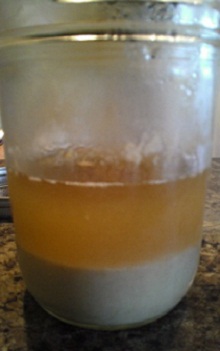Adaptations
Saccharomyces cerevisiae has adapted its respiration to be able to make energy in oxygen rich environments (aerobic) and in oxygen poor environments (anaerobic). Saccharomyces cerevisiae can also produce a small amount of toxins that are not harmful to humans but are able to kill off other fungal yeasts, making it the dominant fungal yeast.(Bamforth 2003) Diploid Saccharomyces cerevisiae has adapted to harsh environments by going through meiosis and producing numerous haploid cells in hopes that they will mate and increase the survival rate. An example of these harsh adaptations would be in the process of brewing of beer. Yeast living in anaerobic environments tend to have multiple copies of DNA as a backup incase DNA is lost during reproduction or becomes mutated. The Reproduction page explains more about Saccharomyces cerevisiae's DNA.
These two pictures represent different strains of Saccharomyces cerevisiae, that are cultured to make beer. The one on the left is used to brew a Belgium white while the one on the right is used to brew a pale ale. Both yeast are required to live in harsh environments.
Continue reading about its nutrition facts or return to homepage.


